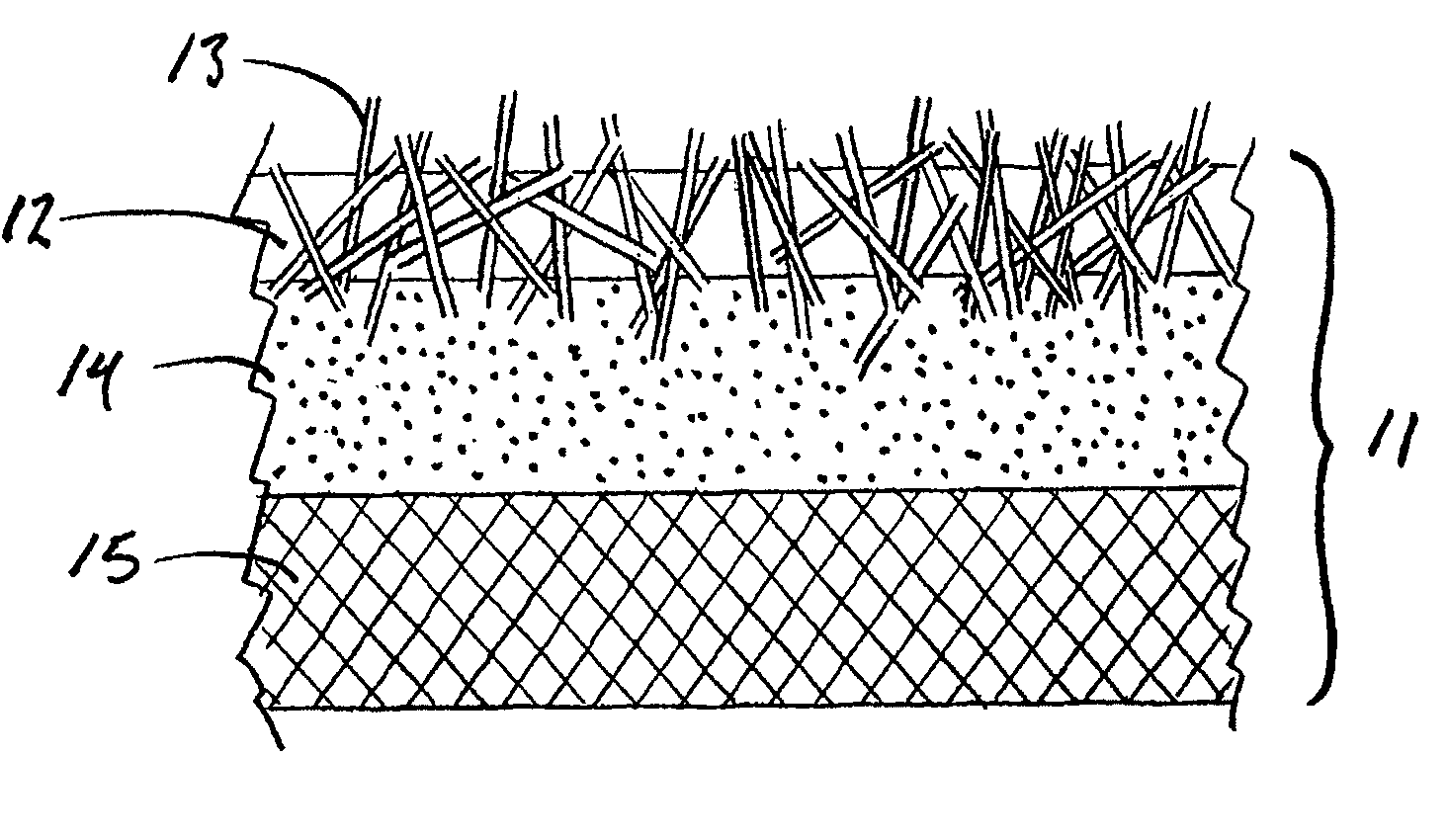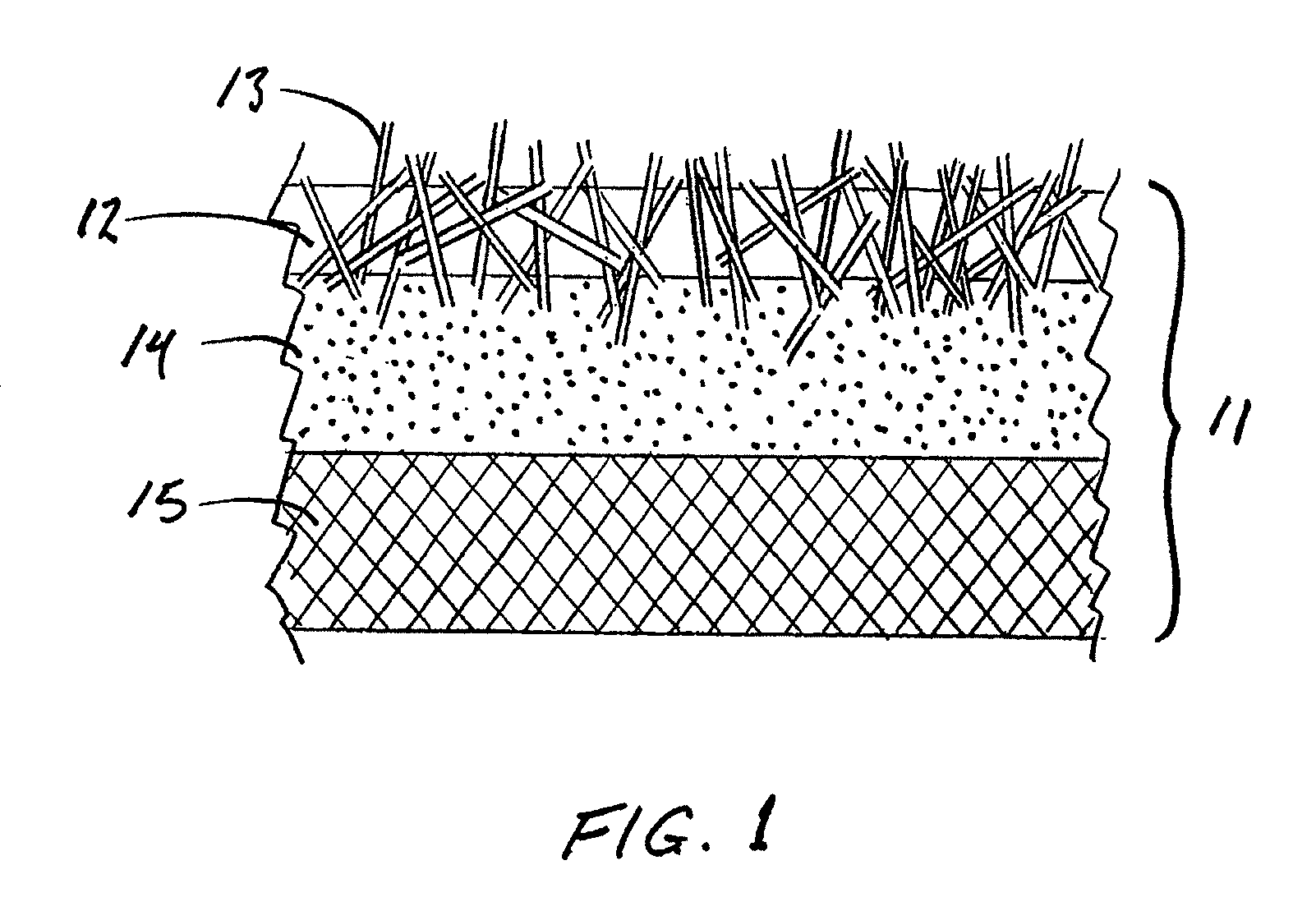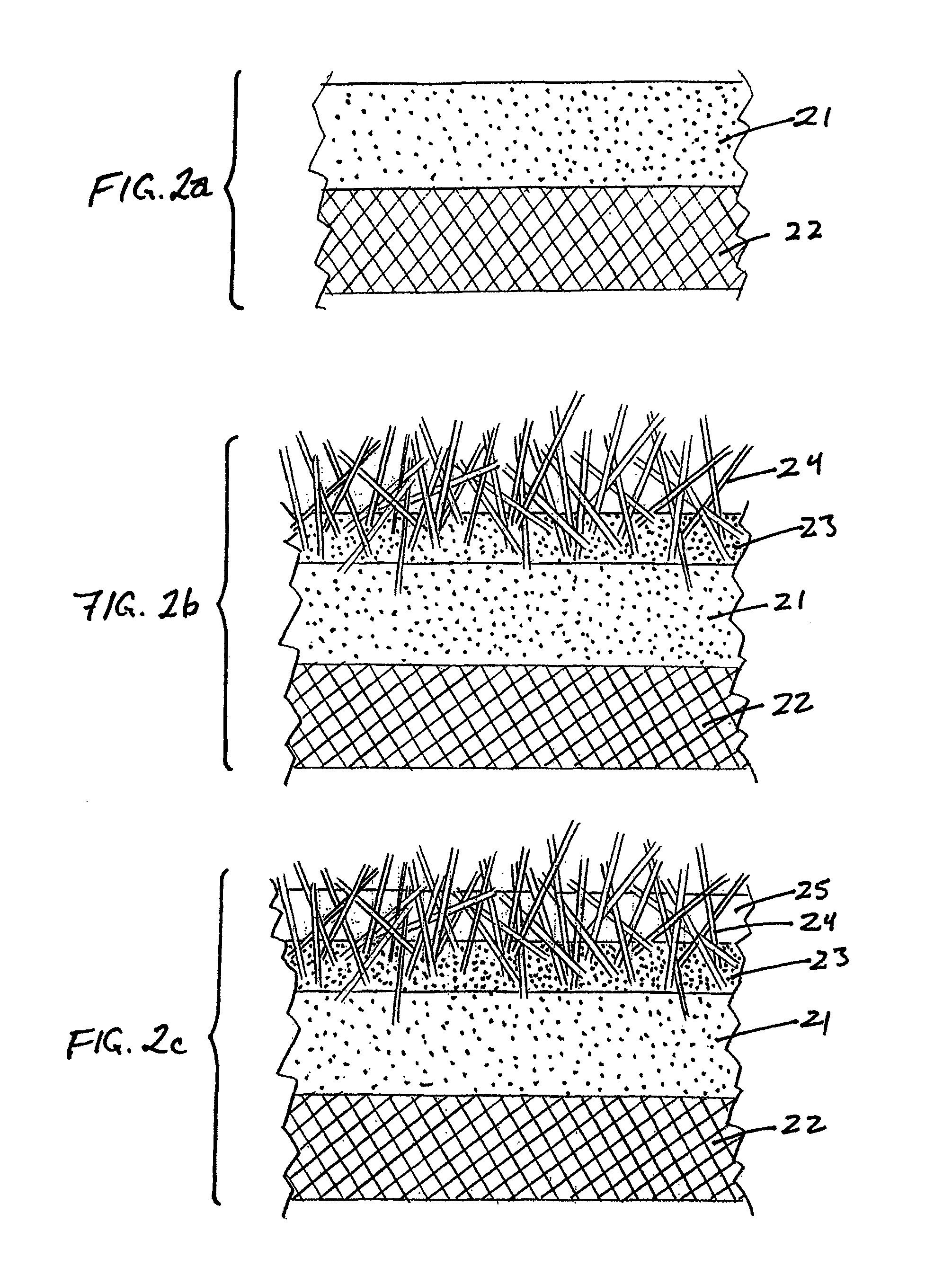Membranes with embedded nanotubes for selective permeability
a technology of selective permeability and nanotubes, which is applied in the field of membranes with embedded nanotubes for selective permeability, can solve the problems of reducing the purity of permeate, affecting the membrane rejection performance, etc., and achieves the effect of enhancing both the selectivity and the permeability of the membran
- Summary
- Abstract
- Description
- Claims
- Application Information
AI Technical Summary
Benefits of technology
Problems solved by technology
Method used
Image
Examples
example 1
Synthesis of Composite Membrane
[0043]This example illustrates the formation of a composite membrane consisting of a layer of polyamide over a polyethersulfone microporous support, with single-wall carbon nanotubes embedded in the polyamide layer which is formed by interfacial polymerization directly over the support, in accordance with the invention.
[0044]Single-wall carbon nanotubes measuring 1,000 nm in length and 0.8 nm in outer diameter and functionalized with octadecylamine to enhance their solubility in organic solvents were treated by controlled, low-temperature thermal oxidation to open both ends. A non-polar suspension of the nanotubes was prepared by suspending the nanotubes in 50 mL of hexane at a concentration of 0.01% by weight. Trimesoyl chloride was dissolved in the non-polar suspension at a concentration of 0.1% by weight Separately, a polar solution of m-phenyldiamine was prepared by dissolving the diamine in water to a concentration of 2.0% by weight. A polyethersu...
example 2
Synthesis of Composite Membrane
[0046]This example illustrates the formation of a composite membrane consisting of two polyamide layers, an intermediate layer and an outer layer, over a polyethersulfone microporous support, with single-wall carbon nanotubes embedded in the polyamide layers, in accordance with the invention.
[0047]A procedure similar to that of Example 1 was followed, except that octadecylamine-functionalized single-wall carbon nanotubes 12-14 Å (1.2-1.4 nm) in diameter were used, and the polyethersulfone support was dipped twice, first in a solution of isophthaloyl chloride and then in a solution of trimesoyl chloride, with the nanotubes dispersed in the isophthaloyl chloride solution. The isophthaloyl chloride solution contained 0.1% (by weight) isophthaloyl chloride and 0.01% (by weight) of the nanotubes in hexane, and the immersion in this solution was maintained for ten seconds. The trimesoyl chloride solution contained 0.1% (by weight) trimesoyl chloride in hexan...
example 3
(Prophetic) Desalination, Nanofiltration, And Ultrafiltration
[0051]The desalination membrane of Example 1 with 0.8 nm outer-diameter nanotubes can be used by forcing one liter of salt water having a concentration of 1 mol / L NaCl against the membrane at a pressure differential sufficient to cause water from the salt water to pass through the nanotubes into a collector. The collected water will have a NaCl concentration of less than 0.1 mol / L, indicating a salt rejection greater than 90%.
[0052]The nanofiltration membrane of Example 1 with 5 nm inner-diameter nanotubes can be used by forcing ten milliliters of water containing 5 nm colloidal nanoparticles at a concentration of 5×1013 particles / mL against the membrane at a pressure differential sufficient to cause water from the colloidal suspension to pass through the nanotubes into a collector. The collected water will have a particle concentration that is below the limit of detection of the analysis technique, indicating that the com...
PUM
| Property | Measurement | Unit |
|---|---|---|
| thickness | aaaaa | aaaaa |
| thickness | aaaaa | aaaaa |
| length | aaaaa | aaaaa |
Abstract
Description
Claims
Application Information
 Login to View More
Login to View More - R&D
- Intellectual Property
- Life Sciences
- Materials
- Tech Scout
- Unparalleled Data Quality
- Higher Quality Content
- 60% Fewer Hallucinations
Browse by: Latest US Patents, China's latest patents, Technical Efficacy Thesaurus, Application Domain, Technology Topic, Popular Technical Reports.
© 2025 PatSnap. All rights reserved.Legal|Privacy policy|Modern Slavery Act Transparency Statement|Sitemap|About US| Contact US: help@patsnap.com



